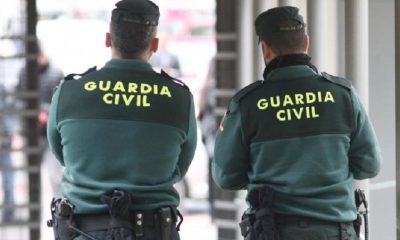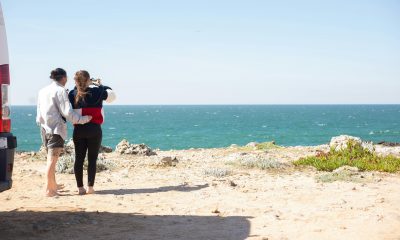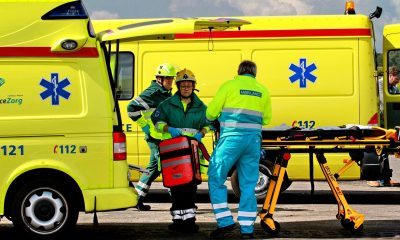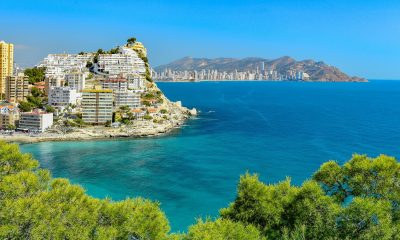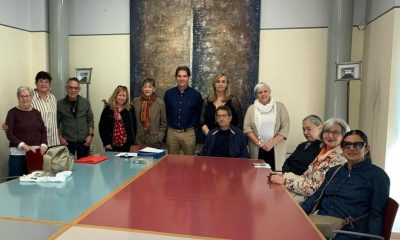Costa Blanca
Alicante’s Low Emissions Zone
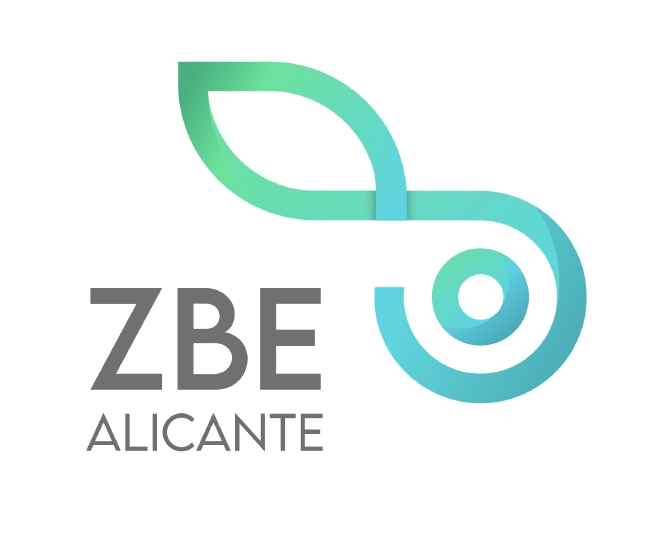
Unlike in other cities, Alicante’s downtown will not see new limits on private car circulation as a result of the ZBE’s adoption. With the installation of numerous environmental sensors and surveillance cameras, however, the municipal government team guarantees that it will enable better management of atmospheric pollutant volumes in real time.
Sensors for the environment
There is no significant pollution problem in Alicante. Actually, out of all the major cities in Spain, several studies have found that ours is the cleanest. Still, we’re taking a number of targeted steps to bring it down even further. Our new infrastructure will be a huge boon, says Manuel Villar, our deputy mayor and environmental sustainability councillor.
The city’s Benalúa Market, Bullring, José Rico Pérez stadium, Station, and General Hospital are among the locations where fourteen sensors have been set up. When these readings reach dangerously high levels, the City Council will be able to take action, including temporarily shutting down traffic, based on the data.
Typically, the haze that occasionally originates from the Sahara is the culprit responsible for the most severe pollution incidents that Alicante experiences, rather than cars. But we haven’t gotten particularly extreme in recent years, and I don’t see the need to do something drastic. According to the deputy mayor, “at least we’ll have objective data to act objectively” now.
Cameras that record
To further keep an eye on traffic, new video surveillance cameras have also been set up. Although optical cable has been laid that might encompass as many as 300 recording devices, only about 100 have been operational so far.
“These cameras will not be used to fine drivers, but rather to provide us with information that will allow us to improve mobility in the city and to redirect traffic flows in order to reduce traffic congestion,” Villar points out.
Officially, the ZBE encompasses the Old Town, the Traditional Centre, and Gran Via, which together form three rings. Finally, this final zone will implement traffic limits in the same manner that they have done since 2011. So, these streets are off-limits to everyone save residents, garage owners, and employees. Sanctions will be implemented, and fines will shortly be increased.
Fines for cars that don’t follow the ZBE’s rules have been increased, according to a deal struck by the Federation of Municipalities. According to the Alicante traffic ordinance, they are currently around 80 euros, but Villar tells us they will likely climb to around 200 euros.
Greater urban density
The sea wind certainly helps Alicante’s air quality, which typically scores well on quality assessments; however, our city’s population has been growing at a large rate for a number of years.
We had 328,000 registered users a decade ago, and by the end of 2024, we had 359,000. Thanks to this change in population distribution, we are now the tenth most populous city in Spain, above Bilbao.
Even though there are more people living here and more cars on the road, pollution levels in Alicante have been rather constant in recent years. Pedestrianisation and lane reductions are two examples of the effective actions we have taken to reduce traffic on different streets. According to Villar, this is the path that we intend to take moving forward.
The Town Hall Area streets of Jorge Juan and Rafael Altamira will not be part of the pedestrianisation of the Town Hall Square.
Regarding this matter, it was recently declared by Mayor Luis Barcala that the Town Hall Square will be pedestrianised. It was indeed this very situation last autumn, when the Town Hall building’s façade collapsed, closing the street for weeks and forcing the closure of operations.
The city can keep running even without this traffic, thanks to this terrible occurrence. Also, the Councillor for Environmental Sustainability notes that town hall squares are usually not a common site for cars to circulate, both in Spain and elsewhere.
The project’s pedestrianisation will be limited to the area within the square; streets like Jorge Juan and Rafael Altamira will still be accessible for vehicles. Considering the bus routes that pass through this area, the next step is to do the necessary investigations to identify other transportation options. It is the expectation of the City Council that the works can commence by the year’s end and be finished in 2026.
Additional methods
Furthermore, we are assured by the government team that additional measures would be implemented to further decrease pollution levels.
All of the buses will soon be electric or hybrid models. Furthermore, we strive to enhance the tree cover and pavement size in every project we do. The deputy mayor assures us that, in addition to cars, they will promote the usage of scooters and bicycles.
Discover more from Costa Blanca Daily
Subscribe to get the latest posts sent to your email.
Costa Blanca
Nineteen endangered turtles have been recovered in Alicante by police operations in 135 countries
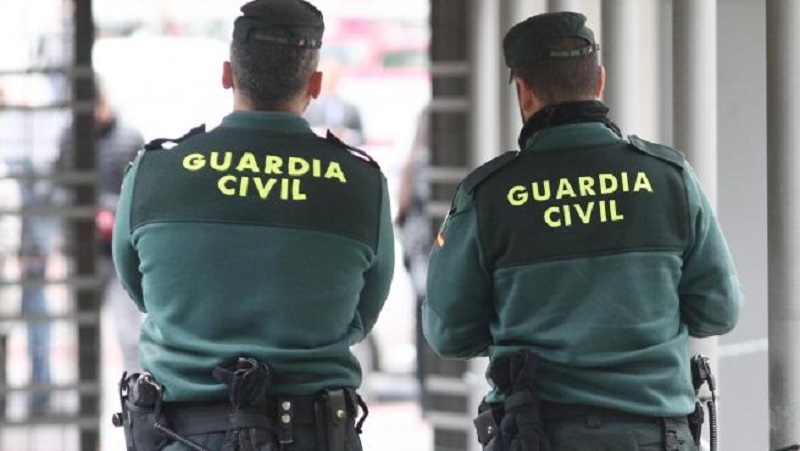
As part of Operation Thunder, which has been conducted in 135 countries in cooperation with groups and entities like the World Customs Organisation, the Guardia Civil’s Nature Protection Service (Seprona) has detained 13 individuals on suspicion of being involved in the illegal trafficking of protected species in Spain.
According to Seprona, the programme is one of the biggest worldwide efforts to combat environmental crimes, having recovered over 20,000 wildlife species in recent years. nineteen endangered turtles have been saved in Alicante.
The cyber patrol was coordinated by Spanish agents with help from specialised NGOs and Europol, and included environmental crime experts from Croatia, Denmark, Finland, France, Hungary, Italy, Portugal, the Czech Republic, and the United Kingdom.
In Spain
The Guardia Civil in Spain has conducted 438 inspections, found 193 administrative and 11 criminal infractions, arrested and investigated 13 individuals, and seized 50 inert pieces, including ivory, tusks, paws, and skins, as well as 192 live specimens.
In his presentation of the investigations’ primary findings, Commander Ramón González Gallego noted that “in recent years we have detected a certain interest in venomous animals such as snakes,” and that “the European Union is a transit point, but also a destination and origin point for species trafficking,” particularly with regard to birds and reptiles.
Even if “some people are unaware that they are committing a crime,” the reality is that “we are increasingly seeing a more serious form of organised crime, which involves breeding and harvesting species for the purpose of generating profit.”
González claims that the financial gains from this kind of illicit commerce “vary depending on the sources consulted, but internationally, the range is very wide” and surpass 20 billion euros.
Penalties and violations
Along with one smuggling offence and another animal abuse offence linked to the trafficking of protected species, nearly all of the criminal offences found in Spain were related to document falsification.
The Natural Heritage and Biodiversity Law, CITES (Convention on International Trade in Endangered Species of Wild Fauna and Flora) regulations, companion animal regulations, and animal health and disease and infection regulations were the most prominent administrative infractions.
According to Commander González, the punishments meted out to criminals in this space “are still low, but they are increasing because they are often associated with other crimes such as document forgery,” and “an increase in penalties is expected in the short term.”
Additionally, Operation Thunder has made it possible to identify wood shipments from countries like Russia and Burma that are forbidden because of their origin and EU regulations.
Operational Features
Among the noteworthy operations, Seprona reported recovering 32 species from under the seats and in the trunk of a car in Tenerife, including a gallipato, a Mexican orange-legged tarantula, and a tortoise.
During a check of a residence in Telde (Las Palmas de Gran Canaria), investigators found 31 other species, including pythons, enormous African snails, California garter snakes, yellow scorpions, and lizards.
18 internationally protected and endangered turtles were rescued by Guardia Civil officers in Alicante and taken to the Santa Faz Wildlife Recovery Centre.
A suitcase carrying 98 birds—both siskins and goldfinches, which are protected nationally—was discovered inside a car in Huelva.
Discover more from Costa Blanca Daily
Subscribe to get the latest posts sent to your email.
Costa Blanca
Torrevieja’s new Local Police fleet

Eduardo Dolón, the mayor of Torrevieja, Federico Alarcón, the councillor for security and emergencies, and Alejandro Morer, the director general of police, presented the 17 new cars that will be used by the Local Police on Paseo Vista Alegre yesterday morning, Wednesday 2nd March. The vehicles will be leased for four years with a purchase option.
A total of 1,147,660.80 euros (286,915.20 euros for each contract year) is allocated for the purchase of these cars.
The 17 vehicles that are leased are:
- Ten SUV patrol cars, all hybrids (four equipped with police gear and an arrest kit, and six equipped with police gear but no arrest kit).
- Two vans: one with nine seats for police equipment and one for police and report preparations.
- A police-equipped all-terrain pickup truck for the Environmental Group.
- Four local police general service support cars without police gear (they should only have rotating magnetic LED lights with an integrated siren and, in three of them, police shields on the front and rear hoods and doors).
In addition, the successful bidder, Transtel, has offered to deliver to Torrevieja City Council two portable vehicle battery jump starters, each worth €200, two fixed/portable vehicle jump starters/chargers, each worth €600, and a high-quality workshop tool trolley with at least 170 parts, valued at €300.
Eduardo Dolón, the mayor of Torrevieja, has emphasised the financial investments made by the city council of Torrevieja in recent years to enhance the number of police officers and the fleet of vehicles of the Local Police, which has increased significantly in the last two years.
Eduardo Dolón said that the government team hopes to increase the number of officers in the Torrevieja Local Police force to 200 by the end of the current term in 2027. This is a significant number in order to provide all the necessary citizen security services that the thousands of tourists who visit Torrevieja each year and the residents of Torrevieja themselves deserve.
Discover more from Costa Blanca Daily
Subscribe to get the latest posts sent to your email.
Costa Blanca
Man arrested in Torrevieja for the death of a 5-year-old jailed
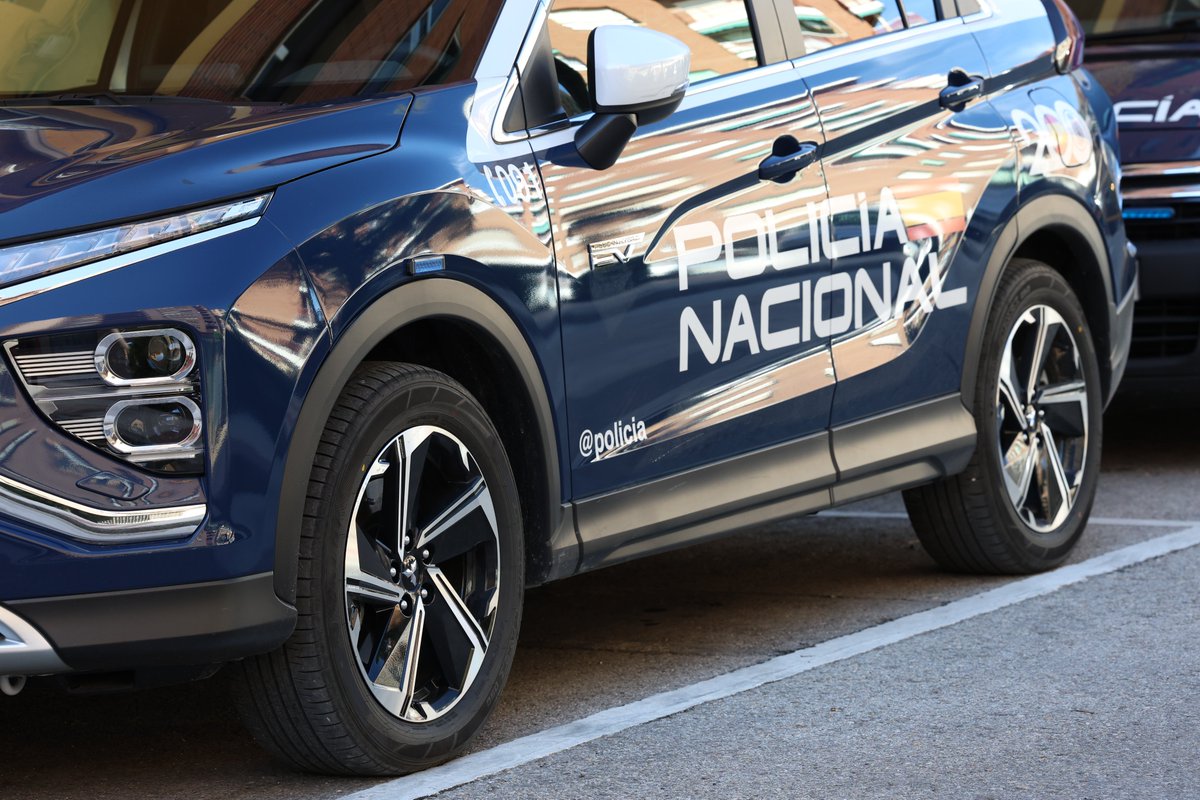
Following his appearance today, Thursday 3rd April, before the judge of the Court of Violence against Women number 2 of Murcia, Jesús J. “Suso,” 48, who was arrested in Torrevieja as the suspected perpetrator of the death of his five-year-old stepdaughter in the Murcian district of Llano de Brujas, will be held in provisional custody without bail.
Additionally, judicial sources state that the adoptive mother has also been questioned as a victim-witness, always accompanied by the victim support unit psychologist. A number of witnesses have also been questioned, including the detainee’s brother and parents.
Along with initiating the required support and social protection measures by directing her to the appropriate authorities, the court has also issued a protection order against the victim, which forbids the accused from contacting or approaching her as a precaution. Although the inmate had no prior allegations of gender-based assault, the court found him guilty in 2010 and 2014 of making threats in connection with domestic abuse, for which he was imprisoned for two years initially and then for an additional year.
The accused was taken to court facilities at 9:40 am following his arrest in Torrevieja on Tuesday, 1st April. Under the watchful observation of National Police officers, some of the girl’s family gathered at the entrance to the City of Justice in Murcia to demand justice for Nadia.
The incident, which has stunned society, happened last Tuesday when Jesús J.G. called the minor’s adoptive mother, Ramona, and said, “The girl is already in heaven.” The accused’s parents later discovered the youngster dead at the family home in the Llano de Brujas district, allegedly as a result of the minor consuming pills or other narcotics.
Given that retaliation against his former spouse may have been the driving force behind the crime, preliminary investigations suggest that vicarious violence may have occurred. Although there were records of threats in texts sent to the victim’s mother, there were no prior reports of abuse.
Discover more from Costa Blanca Daily
Subscribe to get the latest posts sent to your email.
-
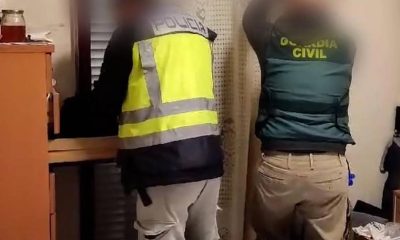
 Costa Blanca2 weeks ago
Costa Blanca2 weeks agoIn Alicante, a criminal group that specialised in robberies at pharmacies and banks has been dismantled
-
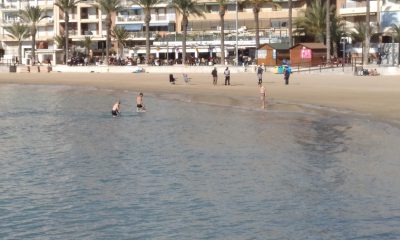
 Costa Blanca2 weeks ago
Costa Blanca2 weeks agoTorrevieja beach bars placed out to tender, but they won’t open until summer
-
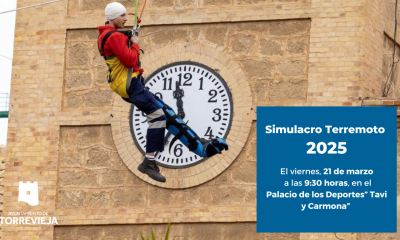
 News2 weeks ago
News2 weeks agoTorrevieja earthquake simulation CANCELLED
-

 Costa Blanca8 hours ago
Costa Blanca8 hours agoBefore Easter, the new road through La Hoya should open
-

 Costa Blanca2 weeks ago
Costa Blanca2 weeks agoElche sets the regulations for riding bicycles and e-scooters
-
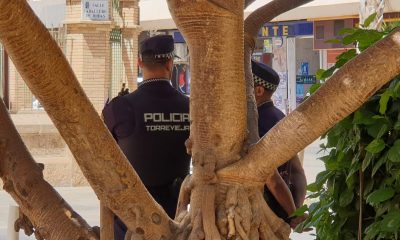
 Costa Blanca2 weeks ago
Costa Blanca2 weeks agoEarthquake drill about to start in Torrevieja
-
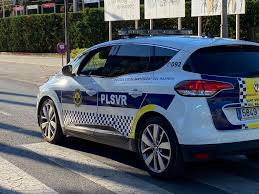
 Costa Blanca2 weeks ago
Costa Blanca2 weeks agoPolice prevent three squatters from taking over an Alicante home
-

 Costa Blanca2 weeks ago
Costa Blanca2 weeks agoElche mother sentenced to 19 years for the murder of her son and the abuse of her twins

